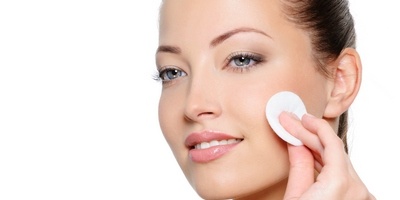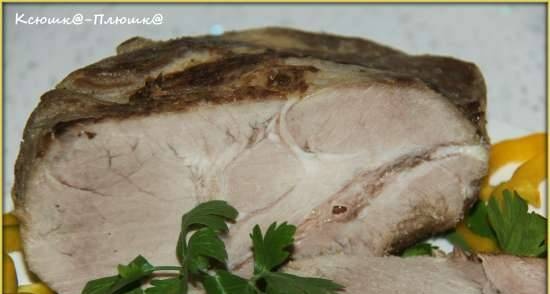Hardening by the sun |
|
The influence of solar radiation on the body is diverse, and the effect of individual parts of the spectrum is significantly different. The greatest biological activity is possessed by UV rays. Visible rays also noticeably affect biorhythms, metabolism, and the general tone of the body. Infrared rays have long been called heat rays. However, in the light of modern scientific concepts, when assessing the effect of solar radiation on the body, one should take into account the total effect of the entire optical range. The hardening, health-improving effect of exposure to the sun is due to the diverse biological and biochemical reactions of the body caused by it. Soon after a sufficient dose of radiation, erythema (redness) of the skin appears due to the vasodilator effect, which improves its nutrition. Due to the stimulation of the reproduction of epithelial cells, the skin thickens, its barrier function improves, regenerative processes are more active (healing of abrasions, wounds, trophic ulcers, etc.). The role of solar radiation in providing the body is extremely important vitamin D (antirachitic), formed in the skin from provitamins when exposed to UV rays.
Due to the bactericidal action of UV rays, the environment (air, water, soil, etc.) is also healed. Skin pigmentation (sunburn) does not have a healing value, but is only a protective reaction of the body against excessive radiation. Excessive sun exposure should not be abused. Under the influence of UV rays, malignant degeneration of birthmarks and other skin formations is possible. Sunbathing is contraindicated in organic diseases of the nervous system, atherosclerosis with significant changes in the walls of blood vessels, decompensated heart disease, hypertension, active form of pulmonary tuberculosis, and hyperfunction of the thyroid gland. It is not recommended to take sunbathing in the last 2 months of pregnancy, during menstruation, in the climacteric period. In all doubtful cases, it is advisable to first consult a doctor. Hardening by the sun is carried out in the open air during work, playing sports or in the form of sunbathing (more precisely, air-sunbathing, since air also acts on the body at the same time). Air-sun baths can be taken individually in various places suitable for this, for collective hardening special areas are arranged - solariums. It is best to sunbathe on the river bank, among green spaces, in areas remote from industrial enterprises. The well-equipped solarium includes a sunbathing area, a shaded resting place, changing cabins, a shower, a toilet, and a room for medical personnel. Sunbathing is taken in the supine position, which ensures uniform body irradiation. For this, solariums are equipped with light trellis trestle beds. They must be washed daily and covered with a towel or sheet during baths. The height of the trestle bed is at least 40 cm (so that there is airflow).
When taking baths, you need to lie down with your feet to the sun, protect your head from the sun's rays with a straw hat, shade with an umbrella or awning, but do not tie it with a towel or kerchief, as this hinders the evaporation of sweat, and, consequently, cooling the head. It is not recommended to sunbathe on an empty stomach, immediately before and after meals. After breakfast, sunbathing can be taken after 30-40 minutes, and finished at least an hour before meals. It is not necessary, in order to quickly tan, lubricate the skin with any cream. If necessary (dry skin), this is done after sun exposure. It is very important to strictly follow the hardening regime (especially in the initial period) in order to avoid burns. Remember: the effect of UV rays does not appear immediately, but several hours after irradiation. And further. Blondes are significantly more sensitive to UV radiation than brunettes. The most common and simplest dosage method is the minute. Hardening begins with sessions lasting no more than 20 minutes per day (5 minutes on each side of the body). Then they are gradually increased by 10 minutes every day (guided by the state of health) and brought up to 1.5-2 hours. When sunbathing, you need to change your body position (lie alternately on your back, sides, stomach), after each hour of irradiation, take a break of 10 —15 minutes, resting in the shade. This eliminates the risk of overheating. In any case, it is not recommended to stay naked in the sun for more than 3 hours a day. You should be aware that many synthetic fabrics are highly UV-permeable. Therefore, you can get excessive radiation and even sunburn by being lightly dressed. It is forbidden to sleep during sunbathing. After the bath, you need to take a shower or swim. Repeated bathing during sun exposure is only permissible for healthy people. At the beginning of hardening, this should not be done, since wet skin is more sensitive to ultraviolet rays .. After the water procedure, you can wipe off, but do not rub the skin. The dosage of sunbathing changes significantly if a person does not lie, but walks, is engaged in outdoor games, etc. Under these conditions, the duration of hardening sessions increases. With systematic sports, the need for special sunbathing is significantly reduced, since athletes already receive a sufficient dose of solar radiation.
In case of insufficient solar radiation, it is advisable to additionally irradiate the body surface from artificial sources of UV radiation (mercury-quartz lamps). This procedure is carried out in specially equipped rooms (photos) or on an individual basis. The most often in need of additional UV irradiation are children, residents of northern regions, as well as persons with occupational exposure to UV deficiency, for example, miners, metro workers. Sun hardening childrenExposure to solar radiation as a prophylaxis for UV deficiency is of particular importance in childhood. This takes into account both the general strengthening effect, the stimulation of hematopoiesis, the immunological activity of the body, and the specific antirachitic effect (prevention of D-vitamin deficiency). Vitamin D formed in the skin under UV irradiation regulates phosphorus-calcium metabolism, promotes mineralization of the child's bones. We would like to emphasize: when hardening, you need to be especially careful and attentive. The baby's skin is more delicate, the thermoregulatory mechanisms are imperfect, the reactivity and sensitivity to external factors is increased, the relative body surface is large (the ratio of body surface to its mass in a newborn is 3.1 times greater than in an adult; as growth increases, this difference gradually is reduced). That is why you should especially carefully follow the recommendations for the sun hardening regime. Age up to 1 yearHardening begins with a sun bath for no more than 2 minutes (1 minute on the stomach, 1 minute on the back). Each subsequent day, the exposure is increased by 1 min.
Age from 1 to 7 yearsHardening is carried out in 2 sessions with a pause of 2-3 hours. At the end of the sun bath, rubbing or dousing with water is performed (from 32 to 24 ° on the 20th day). For children under 2 years of age, the total duration of sessions should not exceed 1.5 hours, up to 3 years - 2 hours, for older children - up to 2.5-3 hours. Since it is difficult for a child to lie for a long time, from the 10th day the duration of sunbathing can build up due to its exposure to the sun in the game, in movements. Age over 7 yearsThe same scheme can be used for children over 7 years old, by slightly intensifying the daily increase in exposure so that the total 2-hour exposure is reached on the 12-15th day from the beginning of the procedure. During the session, you should constantly monitor your well-being, timely change in body position, wipe your body with a dry towel from sweat, protect your eyes and head from direct sunlight. An acceleration of the pulse up to 90 beats per minute or an increase in body temperature by 1 ° indicate overheating of the body and serve as an indication to terminate the procedure. Once again I remind you of the approximateness of the recommended schemes, the need for an individual approach to children, taking into account the characteristics of the body, well-being, the simplest physiological indicators (pulse, breathing, sweating), meteorological conditions during the bath (air temperature, humidity, etc.).
Depending on the individual state of health and the initial level of hardening, it is possible to start hardening not from the very beginning and it is not at all necessary to bring it to the maximum loads indicated in the diagrams. With the correct use of hardening procedures, soon there is an improvement in the general condition of the body, a surge of energy, increased efficiency, cheerful mood, sleep improves, appetite. Unpleasant subjective sensations arising from taking hardening procedures cannot be considered as contraindications to further studies. On the contrary, procedures are more effective when they are stressful and require some effort of will. It is important that this load is not excessive, not to bring yourself to chills or overheating. An indicator of a really unfavorable effect of hardening procedures are negative signs that are becoming persistent; they manifest themselves in general weakness, poor sleep and appetite, decreased body weight, increased excitability of the nervous system, irritability, and decreased overall performance. An overdose of cold procedures can lead directly to colds. If the above-mentioned unfavorable symptoms are found, one should not stop hardening, it is only necessary to significantly reduce the load by switching to lighter procedures, reducing the time for taking procedures, choosing a more convenient time of day, etc. Tikhomirov I. I. |
| The benefits and principles of hardening |
|---|
New recipes
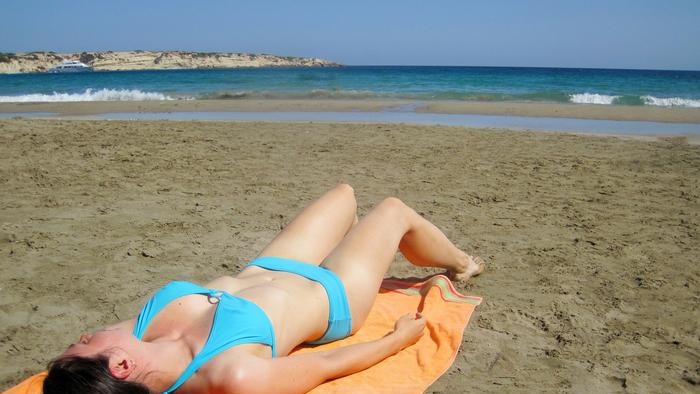 In the complex spectrum of solar radiation, an optical zone with a length of electromagnetic waves in the range of 280-3000 nm is distinguished. Shorter rays (X-rays and gamma rays) are absorbed by the atmosphere and do not reach the earth's surface. In the optical part of the spectrum, in turn, emit infrared rays (760-3000 nm), visible rays (400-760 nm), ultraviolet rays (280-400 nm). 59% of the energy of light reaching the surface of the earth is in its infrared part, 40% of the energy in the visible part of the spectrum and only 1% in ultraviolet rays. When passing through a polluted atmosphere, UV rays are absorbed especially intensively, and their proportion is further reduced.
In the complex spectrum of solar radiation, an optical zone with a length of electromagnetic waves in the range of 280-3000 nm is distinguished. Shorter rays (X-rays and gamma rays) are absorbed by the atmosphere and do not reach the earth's surface. In the optical part of the spectrum, in turn, emit infrared rays (760-3000 nm), visible rays (400-760 nm), ultraviolet rays (280-400 nm). 59% of the energy of light reaching the surface of the earth is in its infrared part, 40% of the energy in the visible part of the spectrum and only 1% in ultraviolet rays. When passing through a polluted atmosphere, UV rays are absorbed especially intensively, and their proportion is further reduced. The beneficial effect of UV radiation on the function of hematopoiesis, on mineral, protein and carbohydrate metabolism, immune activity, on physical performance, mental activity, etc. As a result, the overall tone of the body increases and the resistance to infections increases.
The beneficial effect of UV radiation on the function of hematopoiesis, on mineral, protein and carbohydrate metabolism, immune activity, on physical performance, mental activity, etc. As a result, the overall tone of the body increases and the resistance to infections increases.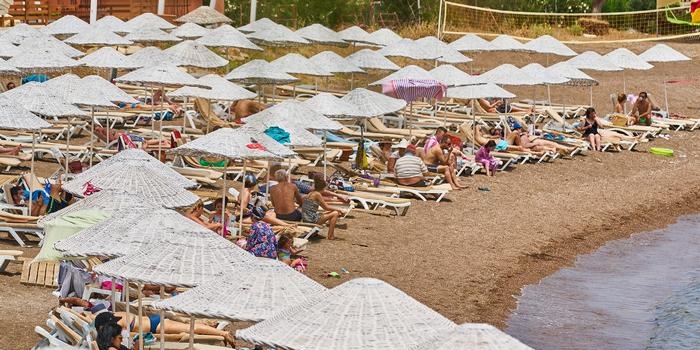 The best time for sunbathing is in the morning when the air is clear, contains less water vapor, less dust and is less hot. In the south and in central Russia, sunbathing should be taken in June - August from 8 to 12 hours local time. In spring and autumn, as well as in cool weather, the most suitable time for taking them is from 11 to 14 hours.
The best time for sunbathing is in the morning when the air is clear, contains less water vapor, less dust and is less hot. In the south and in central Russia, sunbathing should be taken in June - August from 8 to 12 hours local time. In spring and autumn, as well as in cool weather, the most suitable time for taking them is from 11 to 14 hours.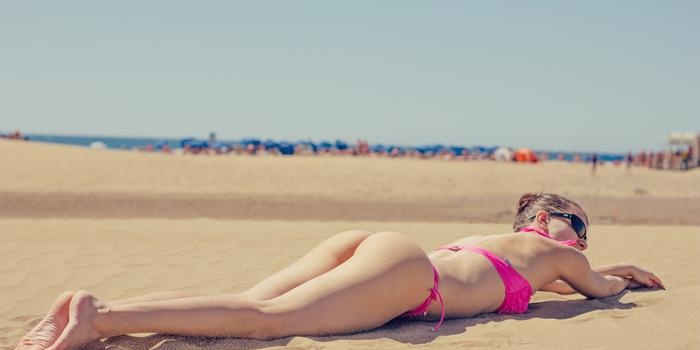 If, during the hardening process, the state of health, appetite worsens, body weight decreases, the pulse changes sharply, the intensity of the procedures should be reduced and even temporarily stopped. For light burns (excessive skin erythema, burning sensation, itching, painful sensations), the skin should be lubricated with lanolin or some fatty cream and not be in the sun and the discomfort disappears (usually a day or two).
If, during the hardening process, the state of health, appetite worsens, body weight decreases, the pulse changes sharply, the intensity of the procedures should be reduced and even temporarily stopped. For light burns (excessive skin erythema, burning sensation, itching, painful sensations), the skin should be lubricated with lanolin or some fatty cream and not be in the sun and the discomfort disappears (usually a day or two).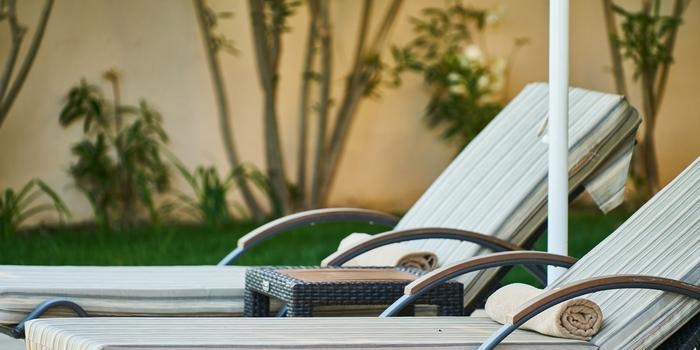 The duration of the irradiation session for the smallest (from 1 to 6 months) should not exceed 10 minutes, from 6 months to 1 year - 20 minutes (during this time, all surfaces of the body become tanned). Hardening is carried out at an air temperature of at least 25 ° (in the period from 10 to 12 hours or from 15 to 18 hours 1-1.5 hours after eating). Children with their heads covered lie naked on a bed or table, the child is evenly turned throughout the session. During irradiation, you can give boiled water to drink. Hot southern sun is not recommended for children under 2 years old.
The duration of the irradiation session for the smallest (from 1 to 6 months) should not exceed 10 minutes, from 6 months to 1 year - 20 minutes (during this time, all surfaces of the body become tanned). Hardening is carried out at an air temperature of at least 25 ° (in the period from 10 to 12 hours or from 15 to 18 hours 1-1.5 hours after eating). Children with their heads covered lie naked on a bed or table, the child is evenly turned throughout the session. During irradiation, you can give boiled water to drink. Hot southern sun is not recommended for children under 2 years old. In conclusion, it should be pointed out that you can start hardening at any age and in almost any state of health (except for acute diseases), but the choice of procedures and their dosage (especially at the initial stages of hardening) should be strictly individual. Therefore, it is advisable for people who are weakened or with any health defects to first consult a doctor. Contraindications to hardening are febrile conditions, acute mental disorders, circulatory failure of the II-III degree, hypertensive crisis, an attack of bronchial asthma and angina pectoris, hepatic and renal colic, bleeding, acute trauma, burns, food poisoning. For practically healthy persons, such consultations are not necessary, but careful self-control during the hardening process is necessary constantly.
In conclusion, it should be pointed out that you can start hardening at any age and in almost any state of health (except for acute diseases), but the choice of procedures and their dosage (especially at the initial stages of hardening) should be strictly individual. Therefore, it is advisable for people who are weakened or with any health defects to first consult a doctor. Contraindications to hardening are febrile conditions, acute mental disorders, circulatory failure of the II-III degree, hypertensive crisis, an attack of bronchial asthma and angina pectoris, hepatic and renal colic, bleeding, acute trauma, burns, food poisoning. For practically healthy persons, such consultations are not necessary, but careful self-control during the hardening process is necessary constantly.

